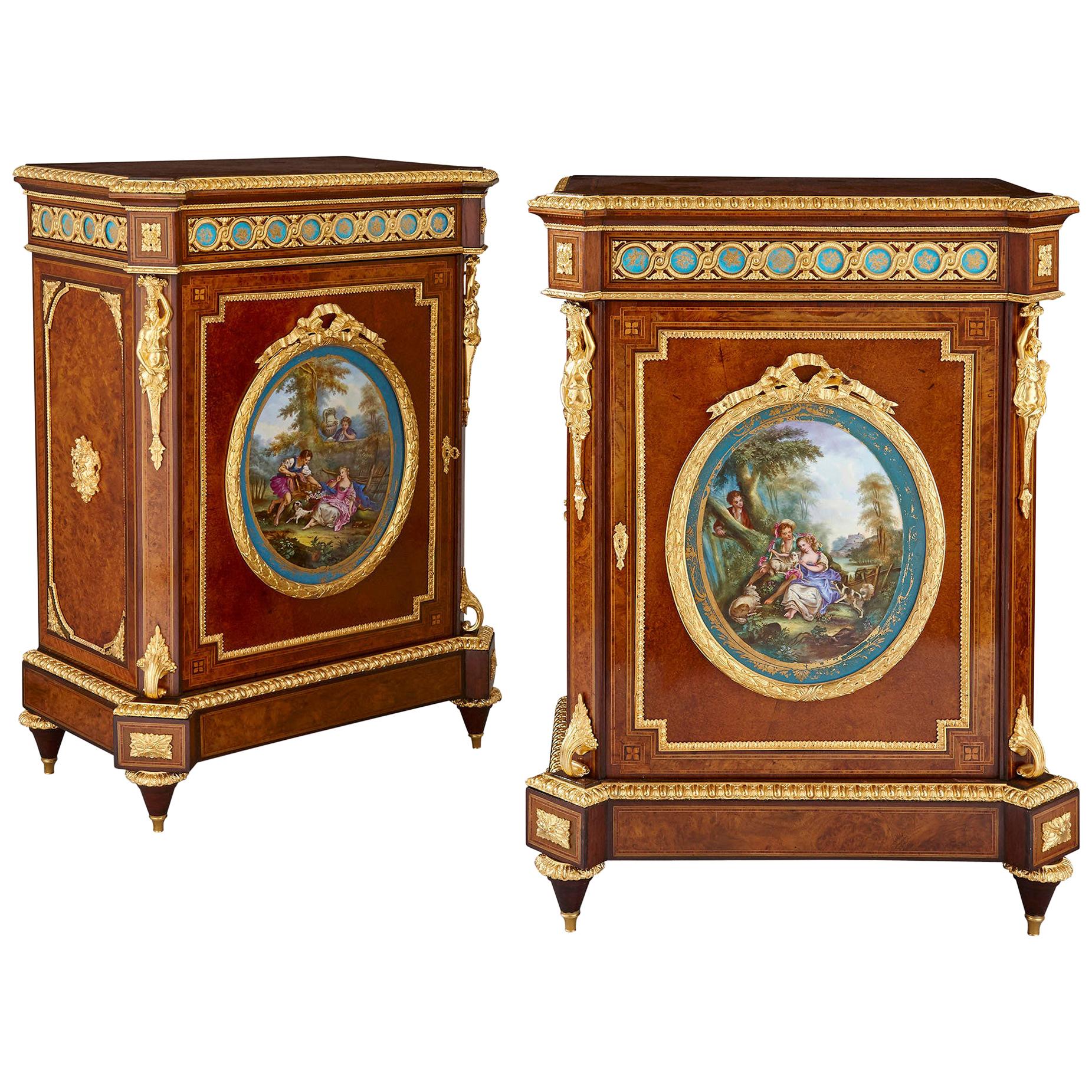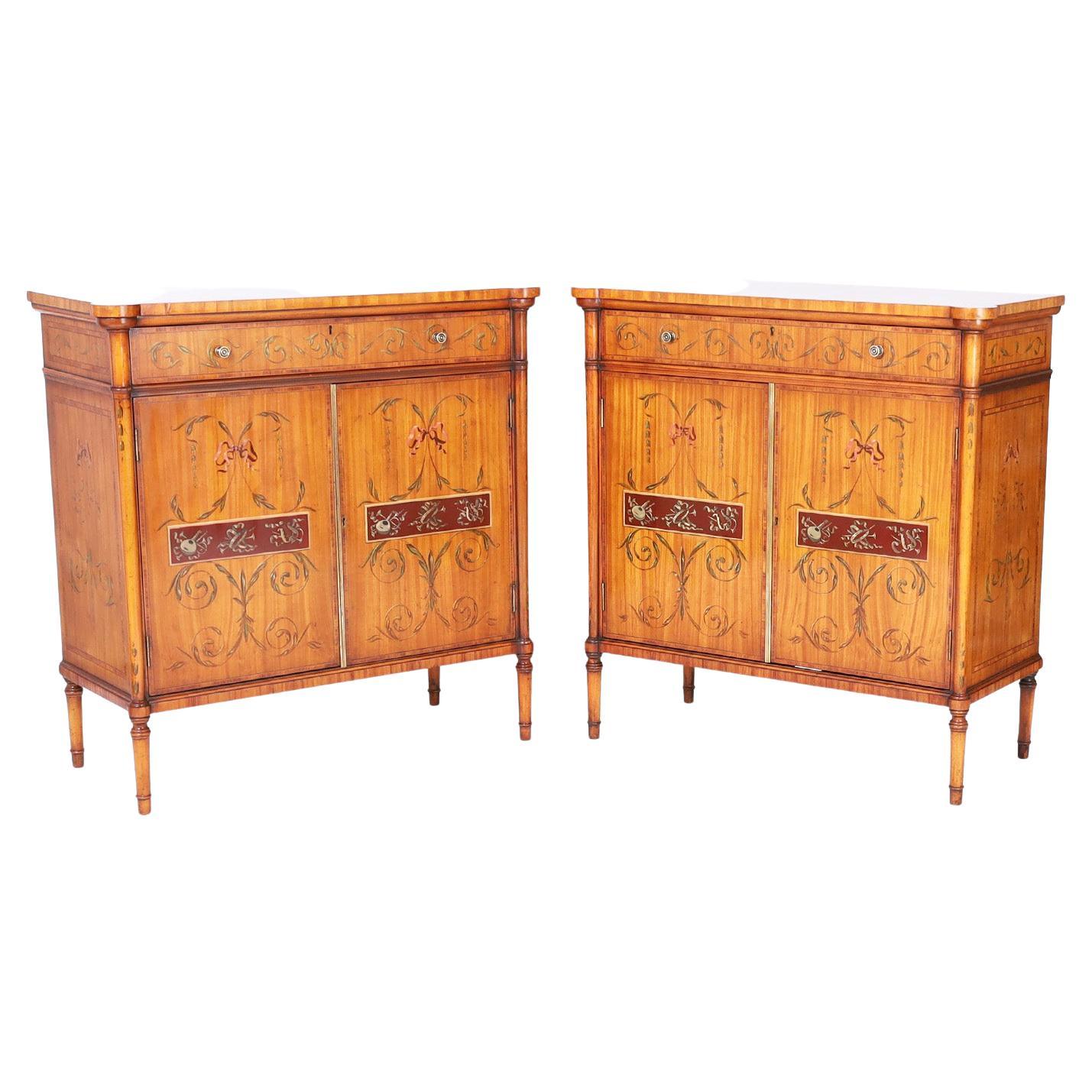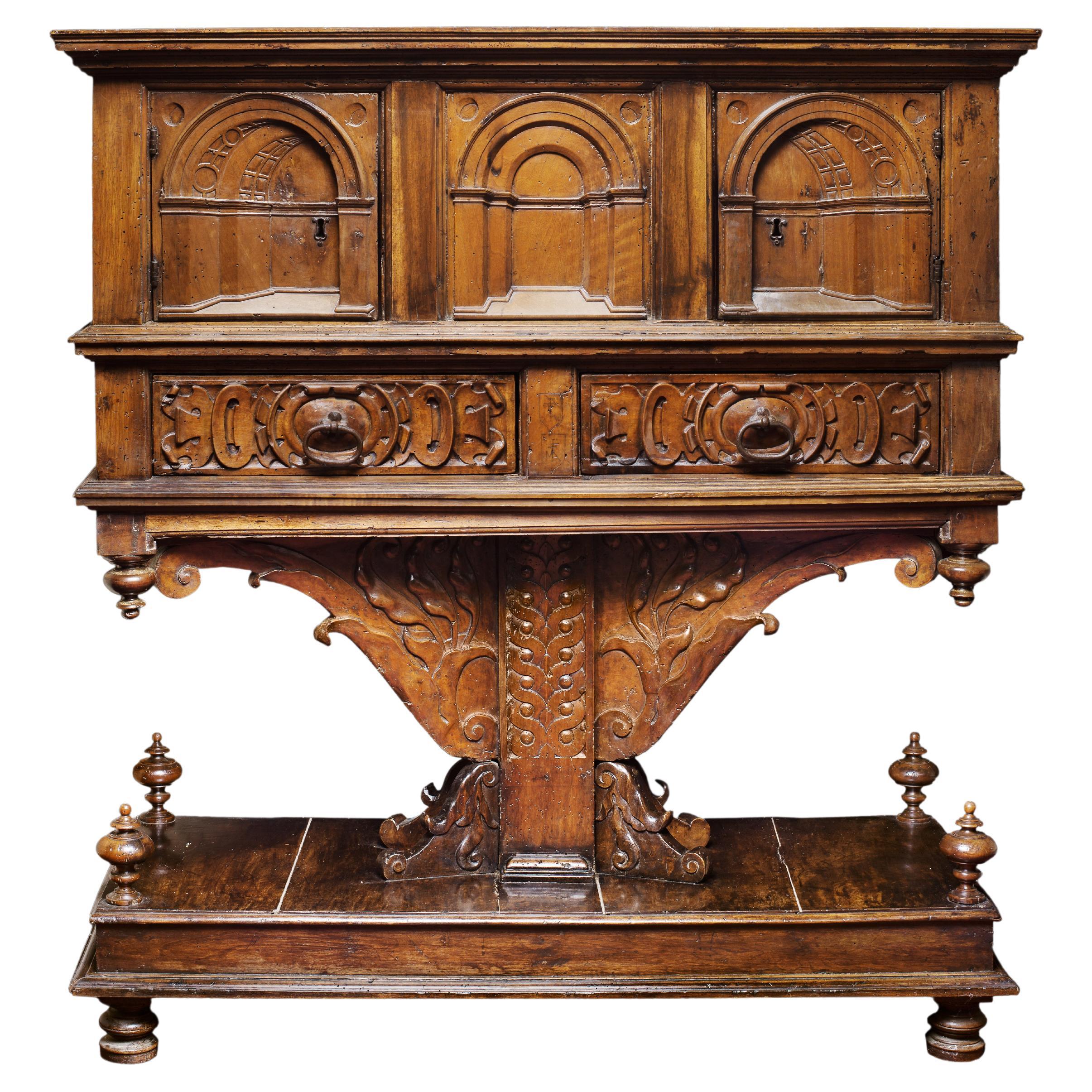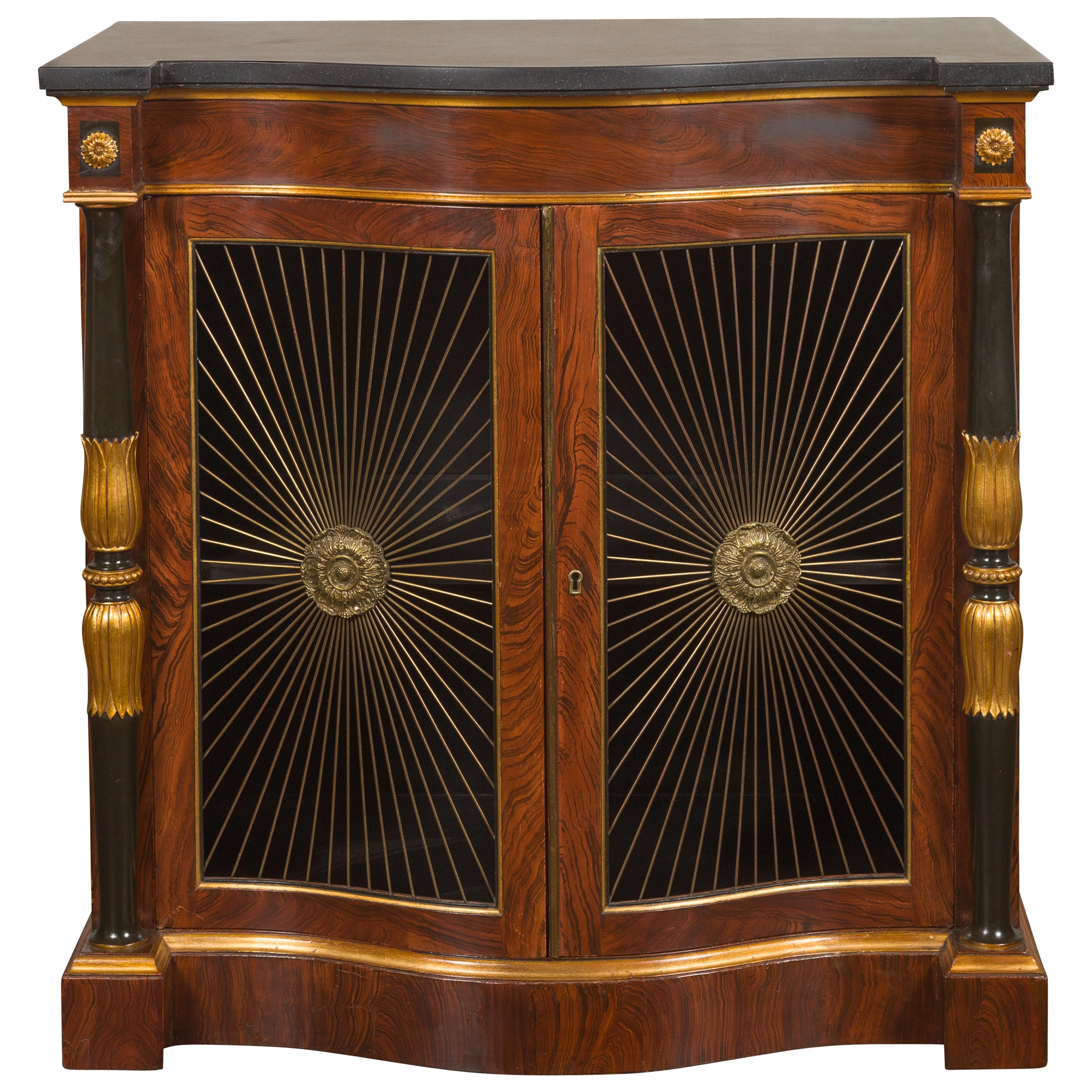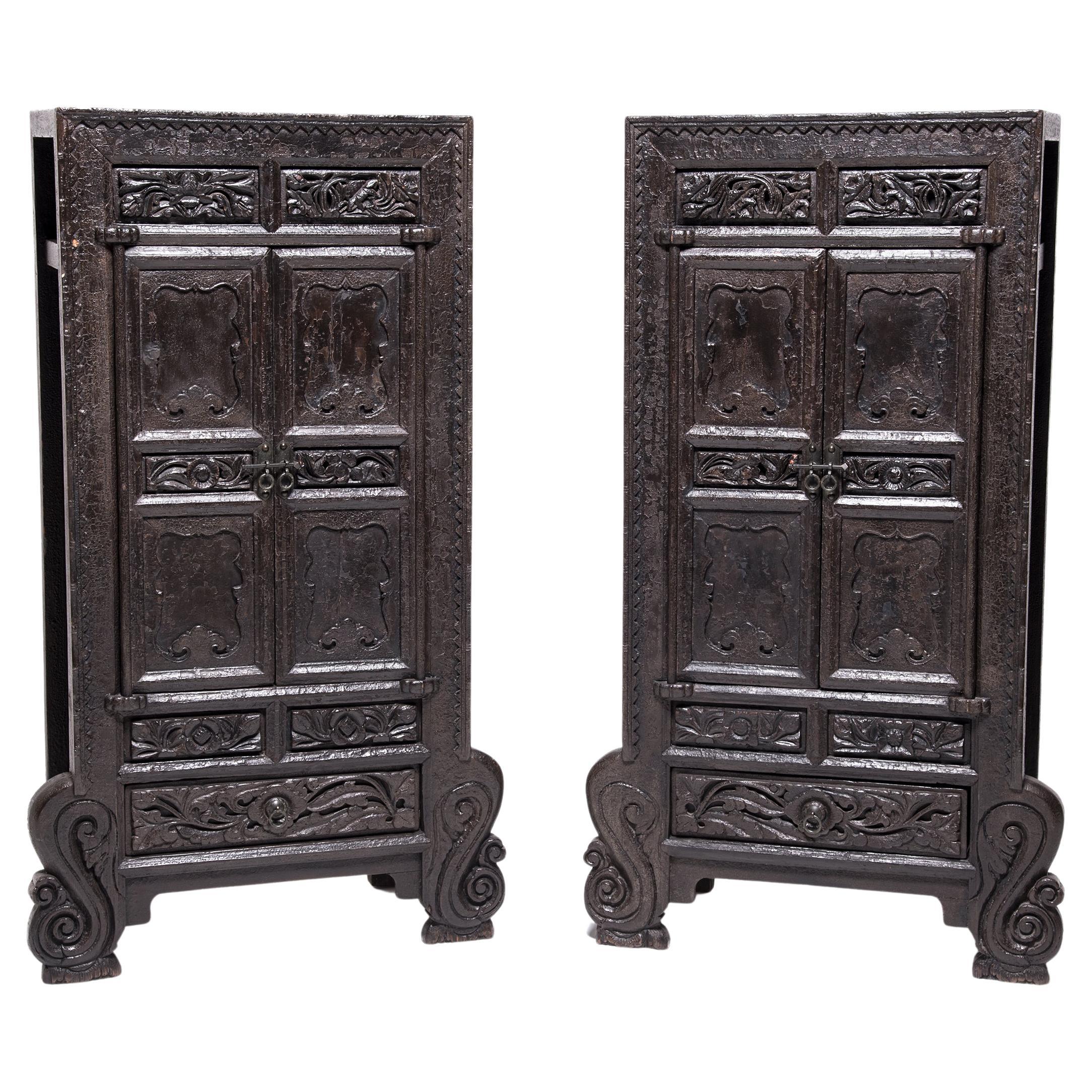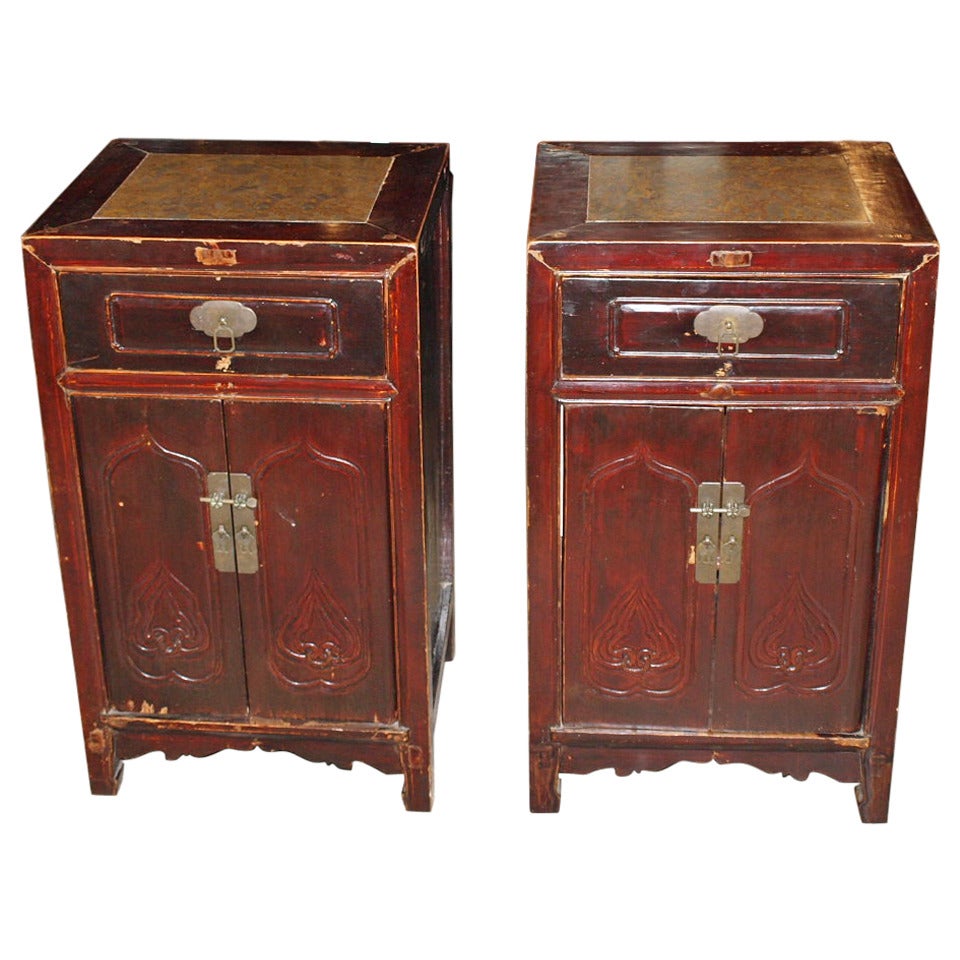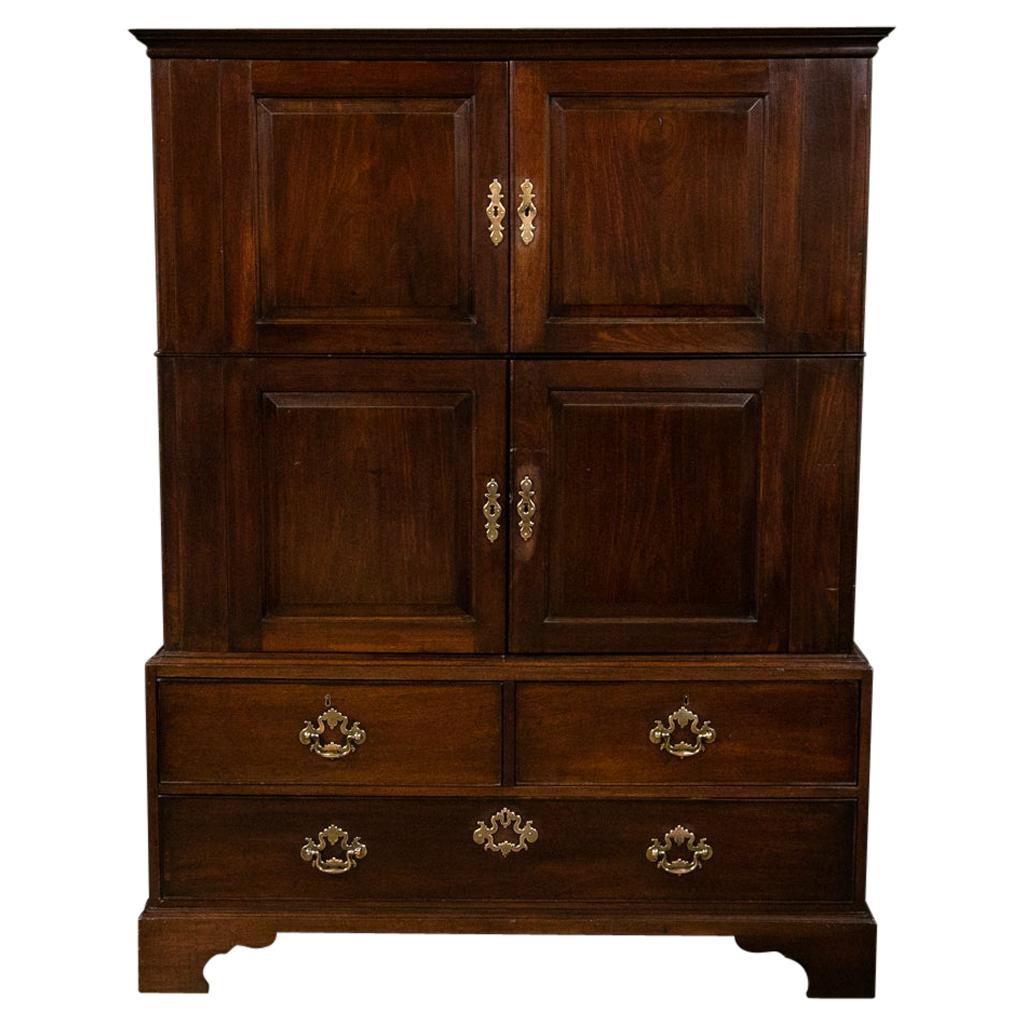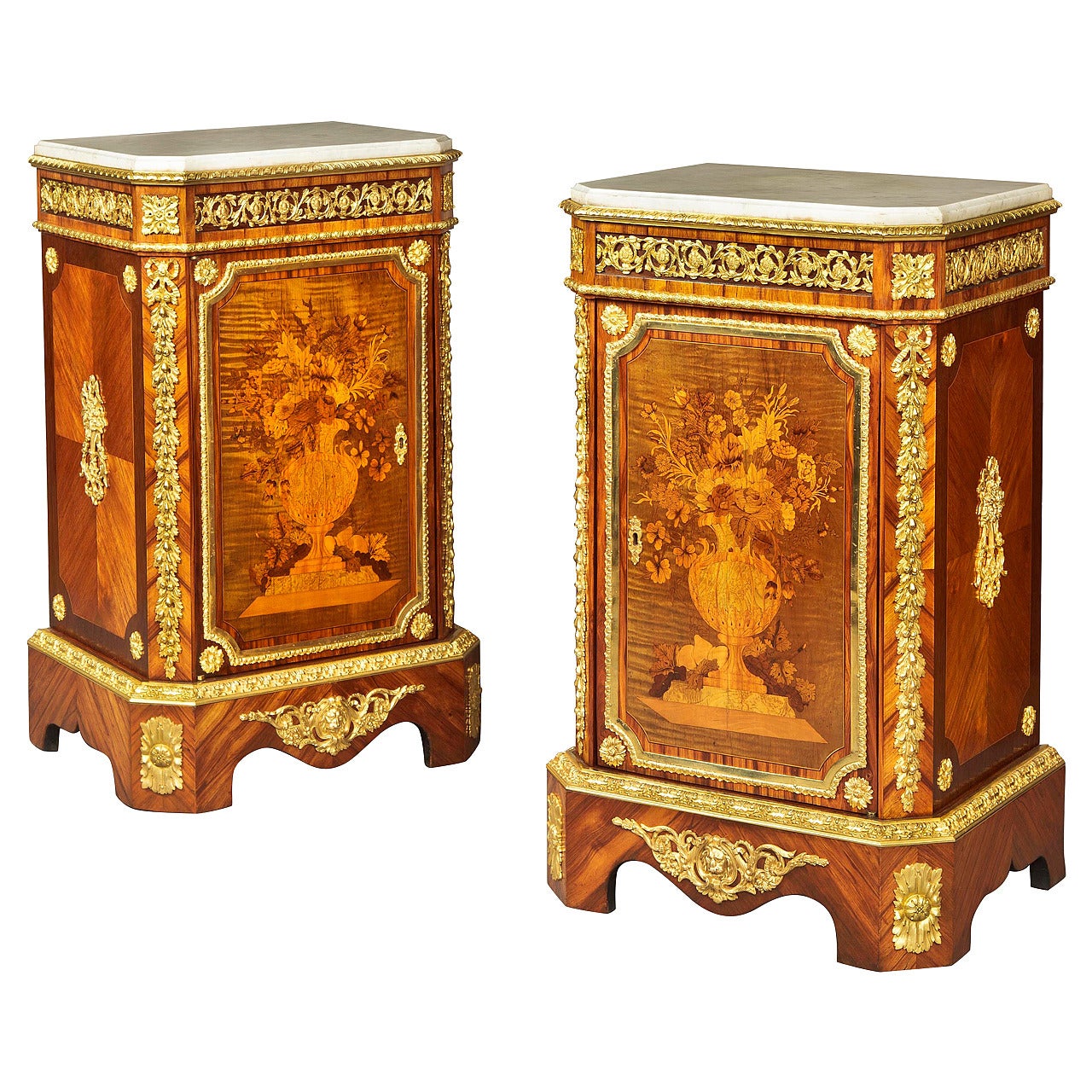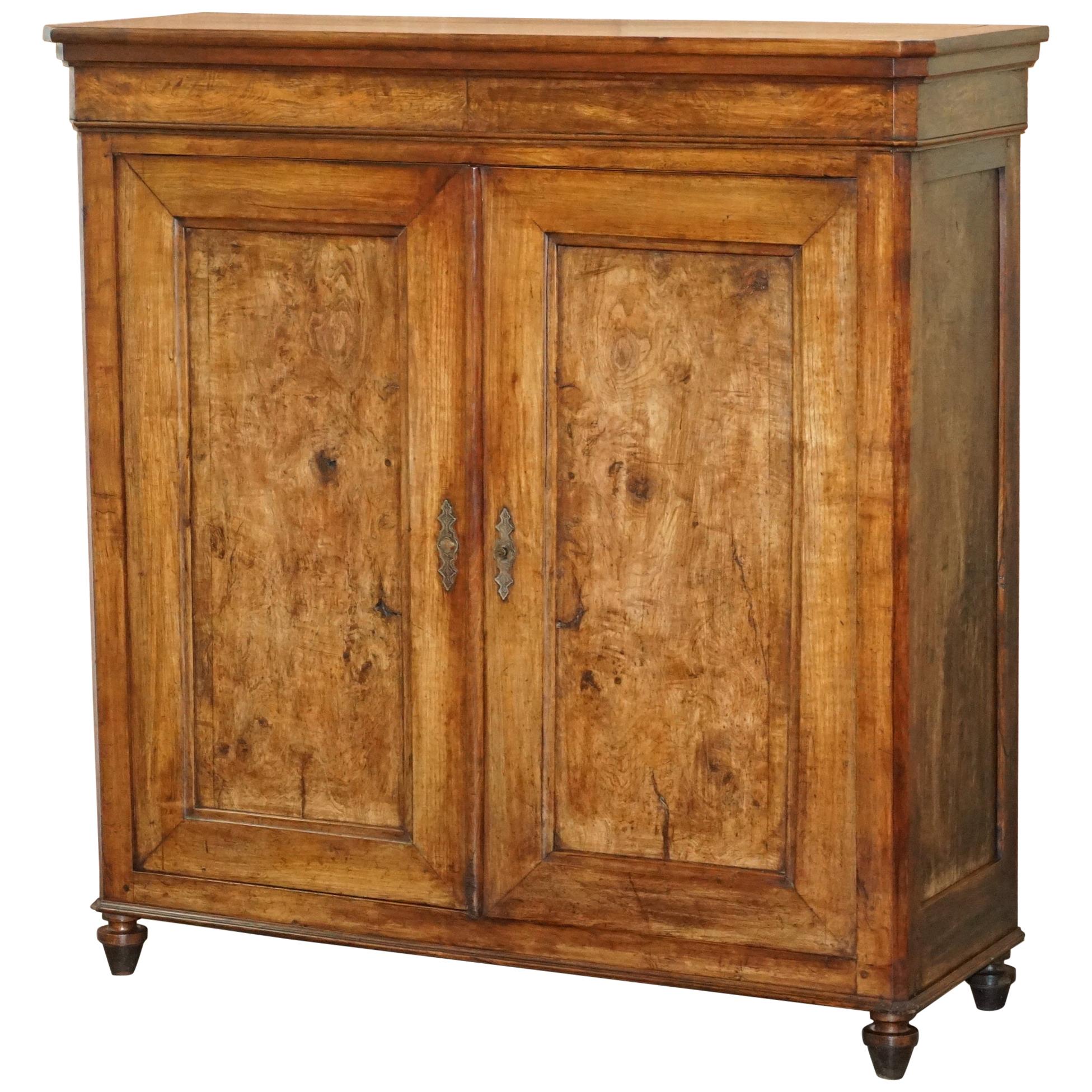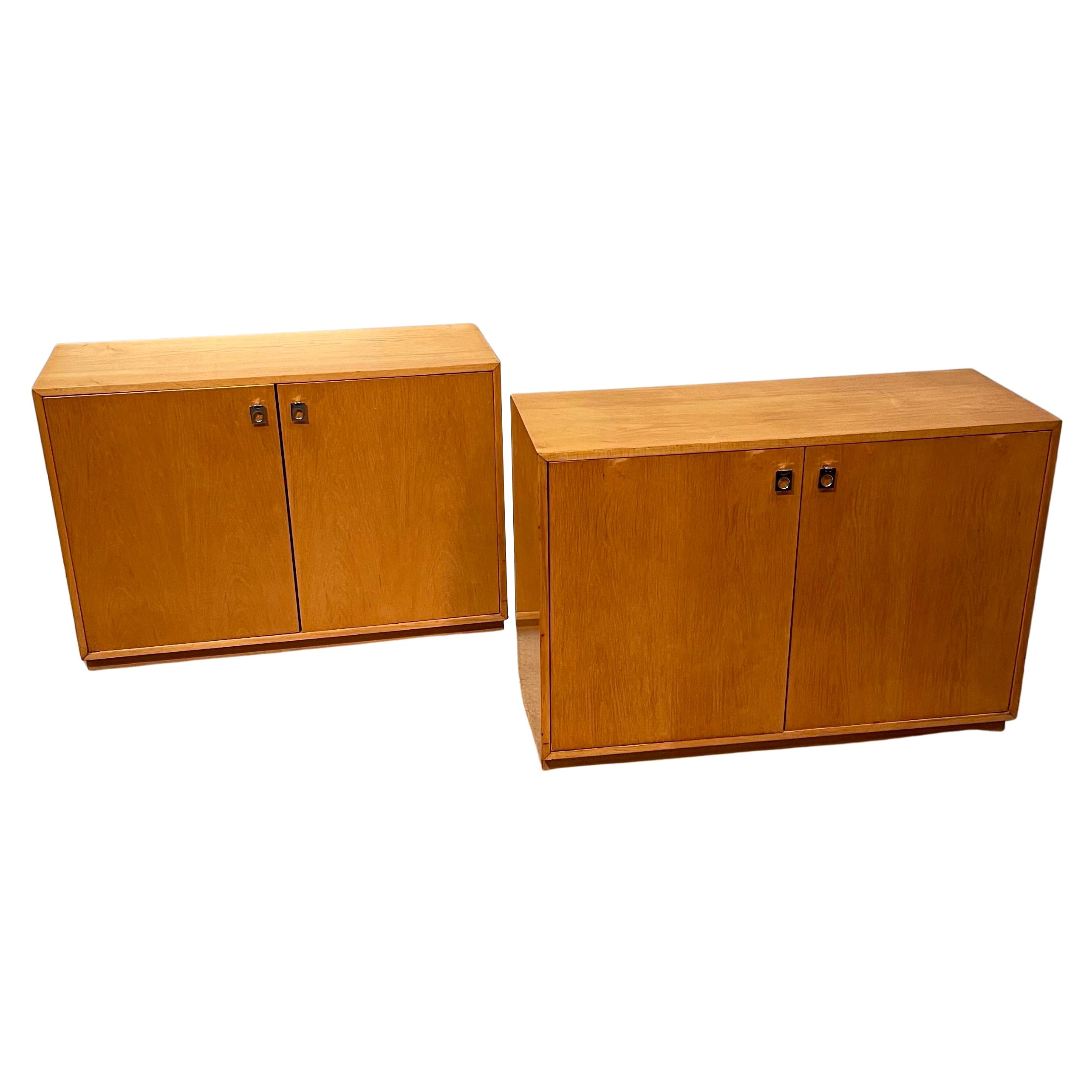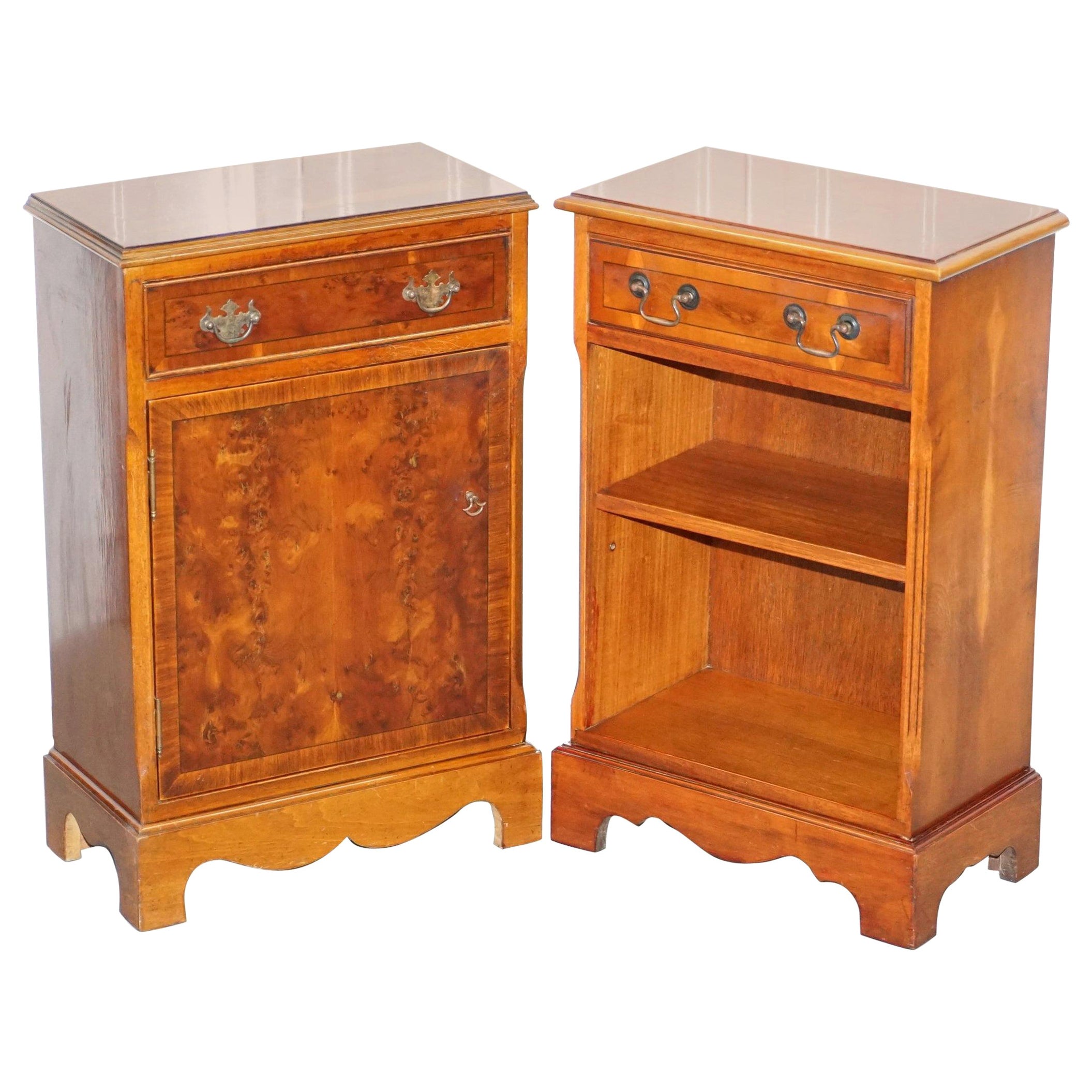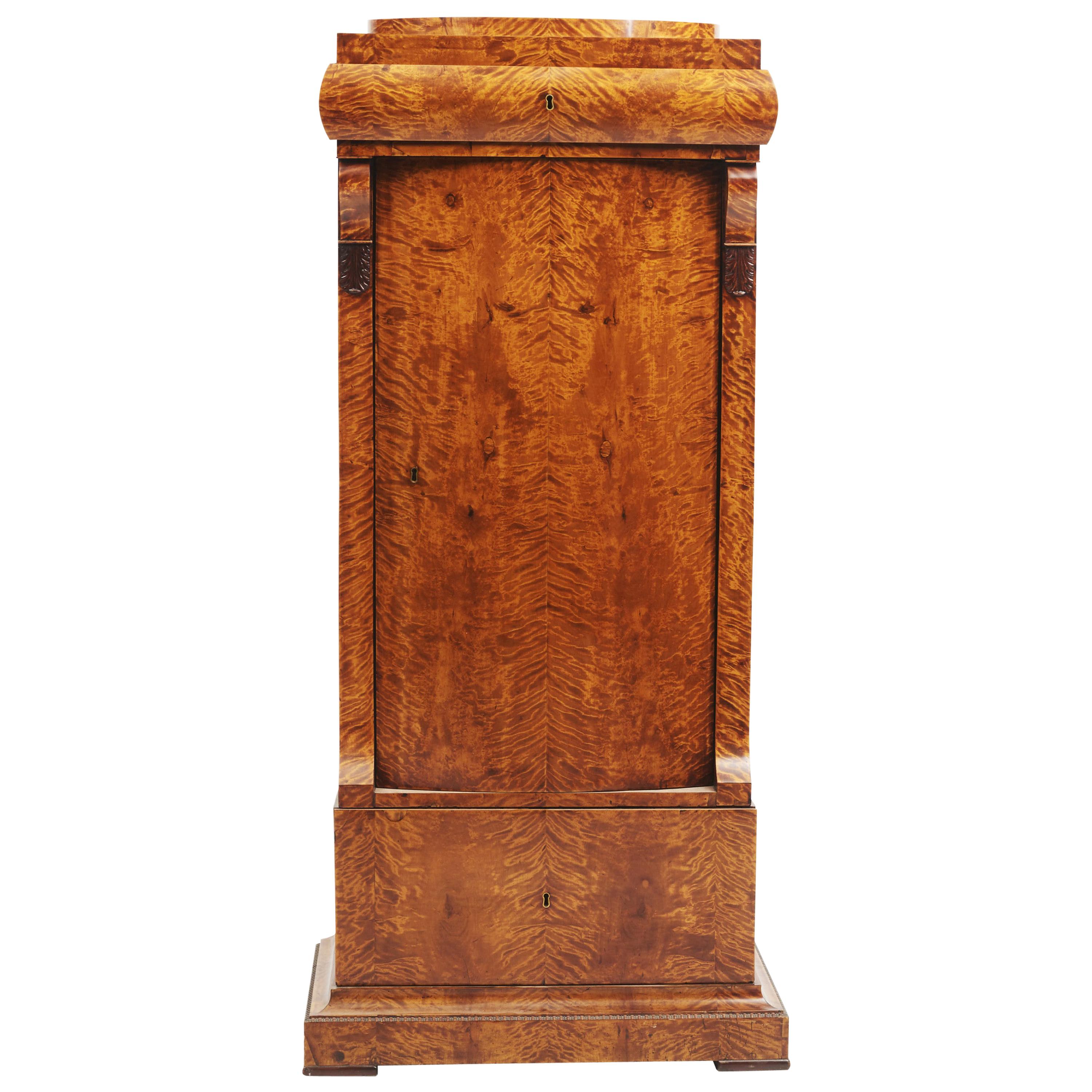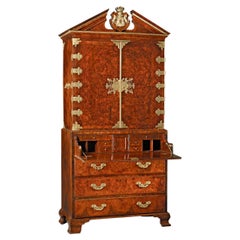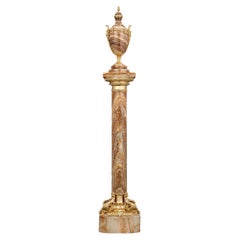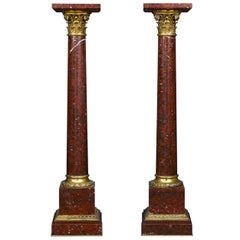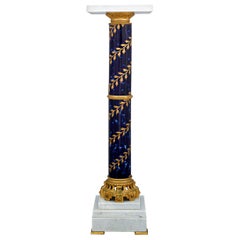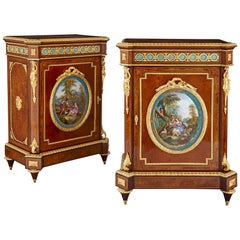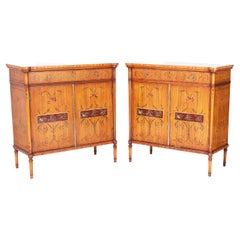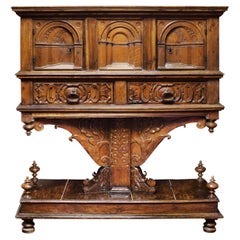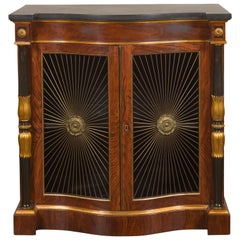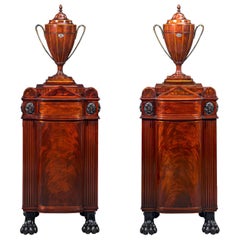
Pair of George Smith Style Dining Pedestals with Cutlery Urns
View Similar Items
Want more images or videos?
Request additional images or videos from the seller
1 of 6
Pair of George Smith Style Dining Pedestals with Cutlery Urns
About the Item
- Dimensions:Height: 68 in (172.72 cm)Width: 23 in (58.42 cm)Depth: 20 in (50.8 cm)
- Style:Regency (Of the Period)
- Materials and Techniques:
- Place of Origin:
- Period:
- Date of Manufacture:circa 1820
- Condition:
- Seller Location:New Orleans, LA
- Reference Number:Seller: 30-11471stDibs: LU89115732803
About the Seller
5.0
Recognized Seller
These prestigious sellers are industry leaders and represent the highest echelon for item quality and design.
Established in 1912
1stDibs seller since 2010
106 sales on 1stDibs
Typical response time: 4 hours
Authenticity Guarantee
In the unlikely event there’s an issue with an item’s authenticity, contact us within 1 year for a full refund. DetailsMoney-Back Guarantee
If your item is not as described, is damaged in transit, or does not arrive, contact us within 7 days for a full refund. Details24-Hour Cancellation
You have a 24-hour grace period in which to reconsider your purchase, with no questions asked.Vetted Professional Sellers
Our world-class sellers must adhere to strict standards for service and quality, maintaining the integrity of our listings.Price-Match Guarantee
If you find that a seller listed the same item for a lower price elsewhere, we’ll match it.Trusted Global Delivery
Our best-in-class carrier network provides specialized shipping options worldwide, including custom delivery.More From This Seller
View AllKing George I Ambassadorial Secrétaire-Cabinet
Located in New Orleans, LA
This highly important secrétaire-cabinet was crafted for and specially ordered by King George I for the British Ambassador to Russia. From its craftsmanship and materials to its exceptional artistry, it is a work of royal and historic significance that exudes power in each and every detail. The broken pediment at its apex features the simplified royal coat of arms bearing the king’s crown, while the interior is adorned by portraits of the British Royal Family. Placed within the ambassador’s St. Petersburg home, this entirely unique piece of furniture would have been a potent reminder of England's grandeur and political importance.
Relations between England and Russia during this period were at an all-time high. Peter the Great had traveled to England in 1698 as part of his widely known “Grand Embassy” tour, wherein he attempted to gain foreign support against the Ottoman Empire. He spent a period of nearly four months there, meeting with King William III and his court on numerous occasions. Noted academic Arthur MacGregor wrote concerning the impact of the trip, “For two decades following Peter's visit, British influence in Russia reached a peak. It manifested itself in social custom, in craft practice and in ships and naval organization... it reached a significant sector of the population before relations cooled once again and the two nations pulled back from this era of unprecedented cordiality.”
First and foremost, however, it is a reminder of British might and influence. By the reign of King George I, England had come into its own as a world power. Unique in its design, this cabinet is a reflection of the country’s might. It is crafted from the highest-quality solid walnut and burr walnut adorned by gilded lock plates and engraved hinges. The presence of ormolu at its apex and lining the doors was a rarity for this period, and its addition makes manifest the importance of the design.
The outer doors open to reveal multiple interiors, including fifteen separate drawers around a central cupboard; the cupboard doors each bear mezzotint portraits of George I and his father, Ernest Augustus, Elector of Hanover. An etching after the portrait of George I dating to circa 1716 is in London’s Royal Academy. A second, inner pair of doors are adorned by mezzotints of the Prince and Princess of Wales (later Queen Caroline and George II), which are both after portraits by Sir Godfrey Kneller dated 1716 in the Royal Collection. A final portrait is revealed on the very interior of the cabinet, where a mezzotint of Frederick, Anne, Amelia and Caroline, children of the Prince of Wales, resides. An etching (circa 1715-1720) after this portrait can be found in the National Portrait Gallery (London).
Apart from its abundance of royal portraiture, the cabinet features stunning painted decoration, including floral designs as well as clouds, birds and trees in a bucolic motif reminiscent of Eden. Its lower portion is a study in both form and function, featuring a fitted secrétaire-drawer above three additional drawers for storage. The cabinet appears in The Shorter Dictionary of English Furniture by R. Edwards from 1964, a text that is regarded as the bible of British furniture design. Edwards describes it as a “writing cabinet...given by George I to the British Ambassador at the Russian court.”
The cabinet was likely made for the 18th-century German diplomat and writer Friedrich Christian Weber, who represented English interests at the Russian court from 1714 until 1719. Although Weber’s tenure as ambassador was relatively short, while in St. Petersburg, he authored his account entitled Das veraenderte Russland (The Present State of Russia), which was published in three volumes in 1721, 1739 and 1740. It may, however, also have been made for George Douglas, 2nd Earl of Dumbarton, who served as ambassador alongside Weber in 1716. Diplomatic relations ceased between the two countries in 1721.
In 1928, the cabinet appeared for sale at the International Exhibition of Antiques & Works of Art in Olympia. It had previously been in the collection of the Woltner family of Bordeaux, the celebrated vintners who owned the estate Château Laville Haut-Brion and produced wine of the same name. According to the family, Monsieur Woltner was given the cabinet as a gift from an aunt who lived in Russia for many years. After leaving the Woltner collection, the cabinet was acquired by William Berry...
Category
Antique 18th Century English Georgian Secretaires
Materials
Brass
Italian Gilt Bronze And Marble Pedestal With Urn
Located in New Orleans, LA
This exquisite Italian pedestal and urn, masterfully crafted from the esteemed Alabastro Fiorito Antico marble, represents the very finest of 19th-century Italian craftsmanship. Alab...
Category
Antique 19th Century Italian Pedestals and Columns
Materials
Alabaster, Marble, Bronze
Pair of Rouge Marble Pedestals
Located in New Orleans, LA
This spectacular pair of marble and doré bronze pedestals is hewn from the finest French "Partridge eye" rouge griotte marble from the Languedoc region. Formed as Corinthian columns, these neoclassical pedestals are complete with intricate bronze doré capitals and acanthus and olive leaf bands around the base. Named for the griotte cherry for its deep, rich color, Red Griotte was the favorite marble for Royal apartments in the 18th century and was used to create the fireplace mantel in the office of Louis XIV in Versailles. This particular type is called "Partridge eye" due to its inclusion of goniatites (small fossilized shells...
Category
Antique 19th Century European Neoclassical Pedestals and Columns
Materials
Marble, Bronze
$34,500 / set
Sèvres-Style Porcelain Pedestal
Located in New Orleans, LA
This pedestal exhibits the style and grace of the famed Sèvres porcelain manufactory. Its lustrous deep blue porcelain base is Classic Sèvres in style, and it provides the perfect ba...
Category
Antique Late 19th Century French Neoclassical Pedestals and Columns
Materials
Bronze
Incredible English Mahogany Seven-Pedestal Dining Table
Located in New Orleans, LA
Measuring over 30 feet in length, this tremendous and highly versatile English dining table is the greatest. It has the ability to transform to a multitude of sizes to fit any occasi...
Category
Antique 19th Century British Neoclassical Dining Room Tables
Materials
Brass
John Henry Belter Rosewood Armoire
By John Henry Belter
Located in New Orleans, LA
One of the rarest furniture forms created by John Henry Belter, this armoire is a testament to this legendary cabinet maker's talent. Recognized as a Pioneer in design and craftsmans...
Category
Antique 19th Century American Rococo Revival Wardrobes and Armoires
Materials
Rosewood
You May Also Like
Pair of Victorian Period Amboyna Cabinets with Sèvres Style Porcelain Plaques
By Hobbs & Co.
Located in London, GB
Pair of Victorian period amboyna cabinets with Sèvres style porcelain plaques
English, late 19th century
Dimensions: Height 108cm, width 77cm, depth 47cm
This unusual and superb...
Category
Antique Late 19th Century English Rococo Cabinets
Materials
Ormolu
$60,275 Sale Price / set
20% Off
Pair of Antique English Adams Style Cabinets
Located in Palm Beach, FL
Adams style cabinets crafted in satinwood featuring hand painted musical medallions on the tops, a drawer and two doors decorated with instruments, leaves and ribbons, hand dovetaile...
Category
Antique Late 19th Century English Adam Style Cabinets
Materials
Satinwood
$11,500 / set
Rare Italian Renaissance Perspectives Sideboard with Fan-shaped Pedestal
Located in Saint-Ouen, FR
RARE ITALIAN RENAISSANCE PERSPECTIVES SIDEBOARD WITH FAN-SHAPED PEDESTAL
ORIGIN: TUSCANY, FLORENCE
PERIOD: 16th CENTURY
Height : 143.5 cm
Length : 133 cm
Depth : 54 cm
Li...
Category
Antique 16th Century Cabinets
Materials
Walnut
English Regency Style 1920s Faux Rosewood Painted Cabinet with Gilt Accents
Located in Atlanta, GA
An English Regency style faux rosewood painted console cabinet from the early 20th century, with gilt accents and marble top. Created in Englan...
Category
Early 20th Century English Regency Cabinets
Materials
Marble
Pair of Ornate Lacquered Cabinets with Cabriole Legs, c. 1850
Located in Chicago, IL
These richly carved and lacquered cabinets were made over 150 year ago in China’s Shanxi Province and remain in remarkable condition. The cabinet fronts are well-proportioned and carved with imaginative detail, including a scalloped trim, swirling s-form cabriole legs, and relief panels of the flowers of the four seasons...
Category
Antique Mid-19th Century Chinese Qing Cabinets
Materials
Elm
Pair Of Chinese Bordeaux Lacquered Side Cabinets With Pudding Stone Tops
Located in Atlanta, GA
A wonderful pair of Chinese bordeaux lacquered side cabinets with Pudding Stone top inserts. The cabinets are constructed from YuMu - Northern Elm Wood....
Category
Antique 19th Century Chinese Cabinets
Materials
Elm
Recently Viewed
View AllMore Ways To Browse
Antique Cutlery Cabinet
Dish Cabinet
Regency Cellarette
Antique Dish Cabinet
Cutlery Urn
Gold Table Top
Italian Midcentury Sconce
Artisanal Lamps
Finnish Vintage
Gold Sconce
Dining Room Chair Frames
French Art Nouveau Furniture
Mid Century Office Chair
Vintage Kitchen Craft
1970s Dining Room Chandelier
Antique Wall Mirror Antique Furniture
Country French Dining Room Furniture
Vintage Ceiling Pendant
